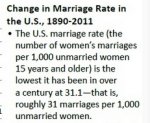1Still_Waters, there are primary and secondary sources. If I share a Psychology Today article, that's a secondary source. Look deeper and you'll see that the article itself is citing primary sources. For example,
in that article I shared, the secondary source names the following primary sources in support of their piece:
1. U.S. Department of Health and Human Services, National Center for Health Statistics
2. U.S. Bureau of the Census
3. a study by D. Cornell (et al.), in Behavioral Sciences and the Law
4. a report in Criminal Justice & Behavior
5. a study by the Charles F. Kettering Foundation
6. Center for Disease Control
7. study published in the Journal of Abnormal Child Psychology
8. a Congressional Research Service Report
What you've done is make the mistake of ignoring all of the primary scholarly sources used by secondary sources. Furthermore, you're not recognizing that national and even regional publications have editorial staffs that check every article for errors submitted to them for publication. This isn't to say that errors don't sometimes get through but these articles are checked by editors for accuracy who maintain a list of contracted reputable experts that they call to verify information with. Of course; this wouldn't apply to blogs, personal websites, etc...
You also omitted scholarly primary sources and studies that I linked directly to and pulled information directly from in your response such as Pew Research and universities.
Yes, you're post is wildly off track. But it was right of you to ask.






